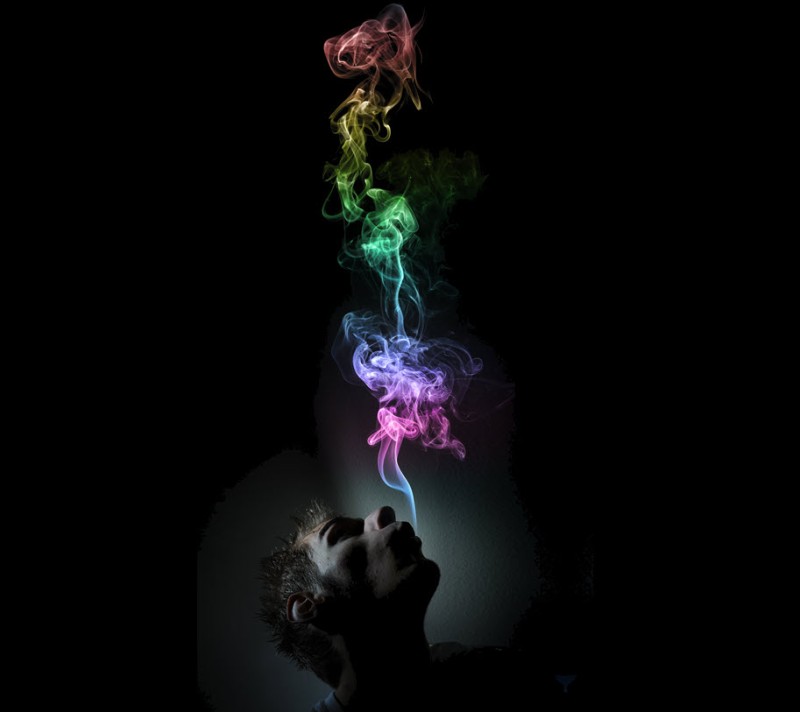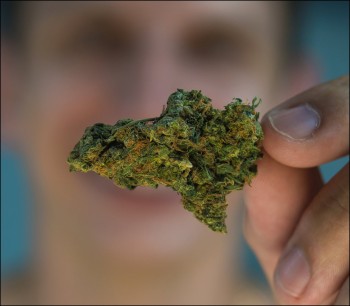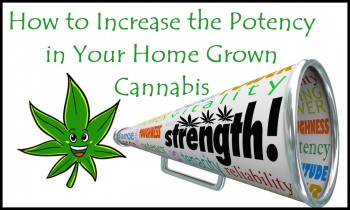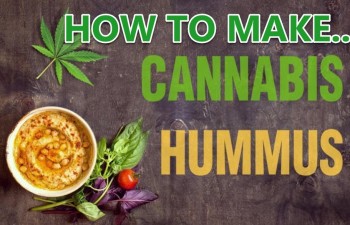
Sniping CNN’s Reefer Madness Article
One would think that in 2023, Reefer Madness articles would be essentially non-existent. However, here we are with CNN publishing some unscientific anti-reefer nonsense, most probably sponsored by their sugar daddies - Pfizer.
Nonetheless, it’s my duty as a cannabis activist to dismember the propaganda and show people just how insidious these media companies are. Even though no one really takes CNN seriously anymore.
Throughout this article, I’ll be breaking down specific parts of the original CNN article which can be found HERE in its entirety.
The Breakdown
CNN:
Marijuana and other products containing THC, the plant’s main psychoactive ingredient, have grown more potent and more dangerous as legalization has made them more widely available. Although decades ago the THC content of weed was commonly less than 1.5%, some products on the market today are more than 90% THC.
The buzz of yesteryear has given way to something more alarming. Marijuana-related medical emergencies have landed hundreds of thousands of people in the hospital and millions are dealing with psychological disorders linked to cannabis use, according to federal research.
But regulators have failed to keep up.
Reginald:
Firstly, while there are some truths mixed within this opening statement, there are also plenty of falsehoods scattered about. For example, the statement that “Although decades ago the THC content of weed was commonly less than 1.5%, some products on the market today are more than 90% THC.”
This is inherently false. Most people did not smoke weed with 1.5% THC or less decades ago. There have always been the knowledge that “some cannabis strains are more potent”, and people knew this in the 1950s and 1960s. Cannabis has been around for thousands of years, and people have used it for its psychoactive properties.
In fact, the use and manipulation of the plant into its many forms have been intertwined with the fabric of our global society. Every culture at some point in time utilized cannabis as a medicine and for industrial purposes.
Therefore, the assumption that during the early 1900s up to the 1960s, there was no understanding of potency, selective breeding, etc - is ludicrous.
While it’s true that most weed available to the markets were either “ditch weed” which was low potency, or cannabis shipped from Mexico. Mexican weed does have a lower than average percentage of THC, however, you’d still see on average potency between 4.5% - 9%.
CNN:
Pot has changed profoundly since generations of Americans were first exposed to it.
Cannabis has been cultivated to deliver much higher doses of THC. In 1980, the THC content of confiscated marijuana was less than 1.5%. Today many varieties of cannabis flower — plant matter that can be smoked in a joint — are listed as more than 30% THC.
At one California dispensary, the menu recently included a strain posted as 41% THC.
Legalization has also helped open the door to products that are extracted from marijuana but look nothing like it: oily, waxy, or crystalline THC concentrates that are heated and inhaled through vaping or dabbing, which can involve a bong-like device and a blowtorch.
Today’s concentrates can be more than 90% THC. Some are billed as almost pure THC.
Reginald:
While it’s technically true that there was low THC in the 1980s - the confiscated cannabis were often left in dismal conditions. Testing wasn’t done immediately. THC degradation happens immediately and don’t be fooled - they did NOT test for THC as stringently as they claimed.
During the 1980s, THC was not their main concern. Look at the D.A.R.E PSAs and you’ll see that they didn’t talk about THC. They talked about “marijuana” or “pot” in general terms because the average consumer wasn’t too savvy about the lingo.
Of course, there was certainly a culture of breeders that were creating more potent strains via selective breeding - the fact of the matter was that law enforcement data integrity on the subject matter is very shotty to say the least.
Additionally, recent research has pointed out that a vast majority of advertised or listed cannabis potency is oftentimes over exaggerated. Realistically, most potent strains sold in dispensaries sit between about 15%-20% .
Furthermore, cannabis consumers tend to regulate their consumption. If they buy high potency cannabis, they tend to consume less of the substance. Therefore, even the mention of potency is irrelevant for the majority of consumers. However, the mainstream wouldn’t say this.
This doesn’t mean that there aren’t “problematic” consumers, but it does mean that CNN is wilfully using alarmist rhetoric to hype up the “challenges” of the industry.
CNN:
Higher concentrations pose greater hazards, according to the National Institute on Drug Abuse. “The risks of physical dependence and addiction increase with exposure to high concentrations of THC, and higher doses of THC are more likely to produce anxiety, agitation, paranoia, and psychosis,” its website said.
In 2021, 16.3 million people in the United States — 5.8% of people 12 or older — had experienced a marijuana use disorder within the past year, according to a survey published in January by the federal Department of Health and Human Services.
That was far more than the combined total found to have substance use disorders involving cocaine, heroin, methamphetamine, prescription stimulants such as Adderall, or prescription pain relievers such as fentanyl and OxyContin.
Other drugs are more dangerous than marijuana, and most of the people with a marijuana use disorder had a mild case. But about 1 in 7 — more than 2.6 million people — had a severe case, the federal survey found.
Reginald:
Firstly, cannabis has always been consumed more than the other drugs combined. Secondly, the vast majority of the “16.3 million people” were “older” than the age of 18. In fact, if you take a look at the statistics, you’ll notice that there have been a decline in use within younger generations.
While college use has risen, 18 & under has seen a slight decline.
Secondly, “Marijuana Use Disorder” is a loose term. You have to smoke like 2 joints a week to be considered “an addict” which makes anyone who is “busted with weed” essentially “addicted” according to this rhetoric.
Finally, even this article admits that the vast majority of consumers don’t have a negative experience. And their line of questioning ends there.
Why didn't they ask, “Why did the 6 out of 7 have a good experience?” What where the differences between these people? Did it have anything to do with set and setting, history of psychotic disorders, etc?
All of these issues have practical solutions, but when you drum the “alarmist” drum, you can’t hone in on the actual important elements, you have to keep the ethereal boogieman in the center frame so that you can continue to operate with impunity.
CNN:
Uneven State Regulation
Medical use of marijuana is now legal in 40 states and the District of Columbia, and recreational or adult use is legal in 22 states plus D.C., according to MJBizDaily, a trade publication.
Early in the covid-19 pandemic, while much of America was in lockdown, marijuana dispensaries delivered. Many states declared them essential businesses.
But only two adult-use states, Vermont and Connecticut, have placed caps on THC content — 30% for cannabis flower and 60% for THC concentrates — and they exempt pre-filled vape cartridges from the caps, said Gillian Schauer from the Cannabis Regulators Association, a group of state regulators.
Some states cap the number of ounces or grams consumers are allowed to buy. However, even a little marijuana can amount to a lot of THC, said Rosalie Liccardo Pacula, a professor of health policy, economics, and law at the University of Southern California.
Some states allow only medical use of low-THC products — for instance, in Texas, substances that contain no more than 0.5% THC by weight. And some states require warning labels. In New Jersey, cannabis products composed of more than 40% THC must declare: “This is a high potency product and may increase your risk for psychosis.”
Reginald
It’s true that due to cannabis prohibition on a federal level, there is no universal regulation. However, the evidence linking high potency cannabis caps and the impact on people consuming them is limited.
Whether it’s legal or not - high potency cannabis is now a thing. Meaning, people will get it iether on the black market or the legal market.
The truth of the matter is that if you are going to “cap” how much cannabis you can buy under the guise of public safety, shouldn’t that apply to alcohol which has a higher body toll than cannabis?
Alcohol is tied to 40% of all violent crimes and domestic abuse. If there’s a candidate to “limit” in terms of potency, and availability it’s alcohol.
Yet the reason we don’t do this is due to the failed experiment of prohibition. We know that if you limit or try to prohibit certain goods - the black market steps in.
Therefore, the best approach is education. Teaching people “how” and informing them of the risks. Creating protocols for those who have “gone over the edge” and provide them with the tools to get back on track.
CNN:
The FDA has “all the power it needs to regulate state-legalized cannabis products much more effectively,” said Lindblom, the former FDA official.
At least publicly, the FDA has focused not on THC concentrates derived from cannabis or weed smoked in joints, but rather on other substances: a THC variant derived from hemp, which the federal government has legalized, and a different cannabis derivative called cannabidiol or CBD, which has been marketed as therapeutic.
“The FDA is committed to monitoring the marketplace, identifying cannabis products that pose risks, and acting, within our authorities, to protect the public,” FDA spokesperson Courtney Rhodes said.
“Many/most THC products meet the definition of marijuana, which is a controlled substance. The Drug Enforcement Administration (DEA) regulates marijuana under the Controlled Substances Act. We refer you to the Drug Enforcement Administration for questions about regulation and enforcement under the provisions of the CSA,” Rhodes wrote in an email.
The DEA, part of the Justice Department, did not respond to questions for this article.
Reginald:
That’s because, for anyone who understands how the FDA and the DEA operate, they are the gatekeepers to legalization. It’s because of this catch-22 situation that exists between the DEA and the FDA.
They have used this system for decades to stagnate research, stop any attempts of decriminalization, de-scheduling, etc.
While the FDA could regulate cannabis, I’d rather not. Since the pandemic, we have seen that the FDA is essentially an extension of big pharma. We have enough historic evidence to at the very least suggest a “heavy collaboration” between the regulatory body and those they “allegedly” regulate.
From a consumer perspective, the trust in the FDA is at an all time low. We know more about how they operate now especially due to how they handled the pandemic.
Therefore, it would be best to create a special regulatory agency apart from the FDA. Under what scheduling is alcohol and tobacco again?
CNN:
In the meantime, said Coleman, adviser to the National Cannabis Industry Association, states are left “having to become USDA + FDA + DEA all at the same time.”
And where does that leave consumers? Some, like Wendy E., a retired small-business owner in her 60s, struggle with the effects of today’s marijuana.
Wendy, who spoke on the condition that she not be fully named, started smoking marijuana in high school in the 1970s and made it part of her lifestyle for decades.
Then when her state legalized it, she bought it in dispensaries “and very quickly noticed that the potency was much higher than what I had traditionally used,” she said. “It seemed to have exponentially increased.”
In 2020, she said, the legal marijuana – much stronger than the illicit weed of her youth – left her obsessing about ways to kill herself.
Once, the self-described “earth-mother hippie” found camaraderie passing a joint with friends. Now, she attends Marijuana Anonymous meetings with others recovering from addiction to the stuff.
Reginald:
Then Wendy the earth mother should grow her own cannabis shouldn’t she? After all, she is an “earth mother”. And why would she suddenly be attending a marijuana anonymous meeting? If she’s been smoking all her life, then she had access to cannabis pre-legality.
Meaning that she has a direct link to her “OG” weed.
Something just smells way too fishy with these unprovable sob stories about weed grannies and teenagers losing their shit because of the “potent weed” when 6 in 7 have no issue with high potency weed according to the very article.
This is a tactic that was used by Randolph Hearst when he tried to smear cannabis. He invented these stories that “could be true” and since he owned the newspapers, he didn’t have to prove it to be true.
CNN, being a tool for Pfizer would most certainly advocate against cannabis for the sole reason that legalization of cannabis equals massive loss of potential revenue for pharma.
Furthermore, people often times “red pill” themselves when they smoke weed, especially, when they learn about the messed up history of cannabis prohibition.
Therefore, from what I see from this article is no different than from what Hearst and DuPont wrote about cannabis in the 1930s leading up to Reefer Madness..
The Sticky Bottom line
At the end of the day, I think that most people don’t take CNN too serious anymore. Nonetheless, they spam this into the psyche of the masses which forms social opinions. This is why I take it upon myself to eviscerate their propaganda and show a more nuanced version of the truth.







